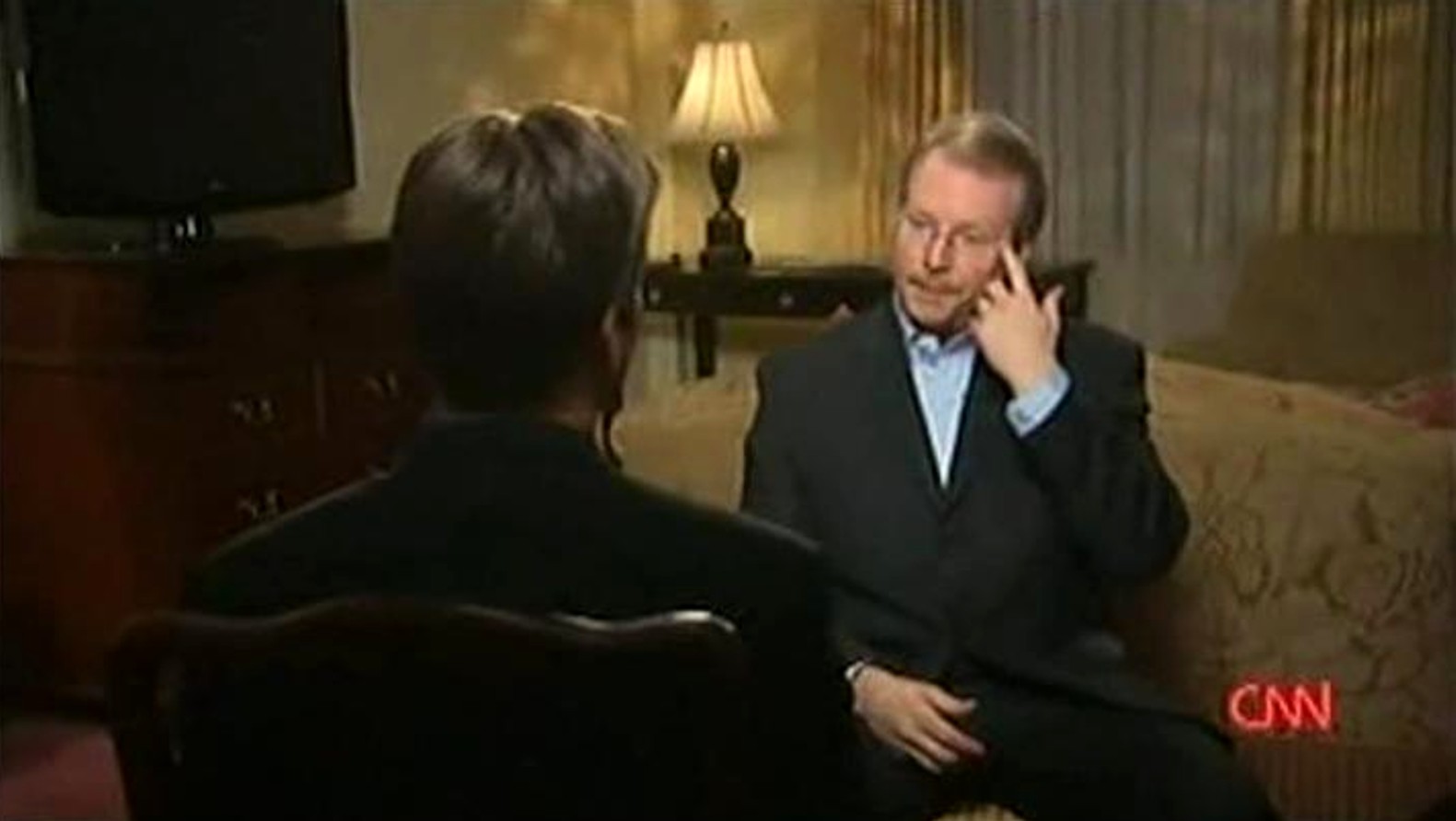
Category: Prosecution views
Tuesday, May 17, 2011
Open Letter To CNN Head Ken Jautz: Reports As Terrible As Drew Griffin’s Risks All CNN’s Credibility
Posted by James Raper
Attention Of Mr Ken Jautz
Executive Vice President Of Time Warner Inc For CNN
CNN Headquarters
Atlanta Georgia
Dear Mr Jautz:
Concerning Drew Griffin’s CNN report on Amanda Knox viewable or downloadable here with a transcript here.
As a practicing lawyer with a deep knowledge of the case, I watched your report two sundays ago (Murder Abroad ““ The Amanda Knox Story) with a growing sense of disbelief.
- I know that CNN is these days seriously struggling and losing viewers in droves, and that you have been brought in by Time Warner to try to turn it around.
- I also know that CNN’s extensive past coverage of the case has been unfailingly appalling, and consistently the most biased and misleading of any TV network in the United States.
So when I watched the report I really expected that CNN might have very sensibly turned over a new leaf. Instead, Drew Griffin presented what seems to me to have been the most unprofessional report on the case ever done.
It was as if the expensive and relentless Knox PR campaign had phoned in the entire script, and as if Drew Griffin’s sole role was to parrot it.
If it had been an openly avowed and paid-for public relations exercise on behalf of the Knox/Mellas camapign, it might have won a few points. But the report was promoted as a new investigation. That was a fundamental misdirection. It was in fact the most extraordinarily biased and one-sided presentation that I and I expect many others have encountered.
There were so may errors, omissions, sneers and blatantly misleading suggestions - all leading to a complete lack of balance - that no viewer, other than those who would already be knowledgeable about the case, had a hope of being able to form an impartial and informed view of the case.
One could write a book about the omissions made by the programme, but I will enumerate just some of these, and the errors and blatantly misleading suggestions, as I go through the repprt here below.
Quick summary of the report
First, here is the thrust of the Griffin report. Amanda Knox and Raffaele Sollecito are the victims of a rush to judgement by an obsessive prosecutor, some circumstantial evidence, a discredited star witness, wrong media reports, and limited scientific evidence that is inconclusive and unreliable.
Oh and there was some nasty behaviour, inducing a false confession, by the police towards Amanda which mirrored the nasty behaviour that had terrified the novelist Doug Preston whilst he was in Italy preparing for his book “the Monster of Florence”.
And most, if not all, of this was the fault of the Public Prosecutor, Mignini. The foregoing is also the basic thrust of the Amanda Knox PR campaign which has been repeated over and over again elsewhere.
There were a mere poor fleeting cursory images of the real victim, Meredith Kercher, and maybe three or four dozen highly manipulative images of Knox and her siblings (see several here) going back to when they were tots.
Apart from Dr Hampikian of the Idaho Innocence Project, Doug Preston, and Mignini, and a cameo non-contentious appearance from Meredith’s lawyer, all of the contributors were family or close family friends. None of the defence lawyers partook, perhaps expecting the embarrassing worst, which was duly delivered.
Meredith’s family and friends were not even mentioned, let alone interviewed by Drew Griffin.
Reactions of the prosecutor of the case
CNN interviewed many, with almost endless montages of a young Knox, to attempt to undermine the case.
Although there are dozens of lawyers and experts and reporters that could explain why in the first round Knox and Sollecito were unanimously found guilty, Griffin unprofessionally chose to interview only ONE for that side of the case. He was Mr Giuliano Mignini, one of the two prosecutors on the case, who speaks no English and was thus easy for Griffin to condescend to and seriously mischaracterize. (A full transcript of that interview, translated, will be our next post; be prepared for surprises Drew Griffin clearly wanted to hide.)
I thought that Mr Mignini dealt with Drew Griffin’s unbelieving and cynical stare and his loaded and intentionally unsettling questions ( to which I shall later refer) quite well in the circumstances, since it was obvious right from the start that the unprofessional Drew Griffin was setting him up. At least he dealt with the situation gracefully, and at times even with a little amusement.
As a taster, the first question thrown at him was “Is Amanda Knox evil?” The prosecutor shifted in his seat, thought about this philosophical question for a bit, and then wisely decided to ignore it.
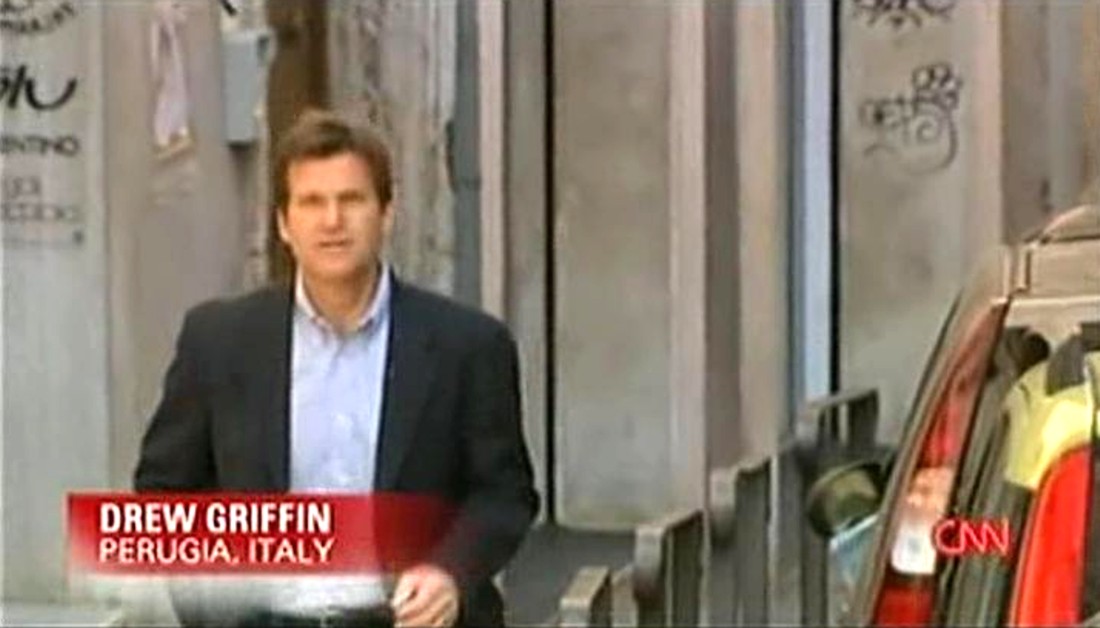
Points of error and omission in the report in the order in which they arise
(1) The most vital document on the case of all, a 427 page judgment on Knox and Sollecito known as the Massei Report, which can be viewed via the link at the top here, was not mentioned at all. It seems that neither Drew Griffin nor any of the programme’s producers have ever cast an eye over this document. If they have, they have blithely ignored it.
The Report contains a detailed resume of the evidence presented at Amanda’s trial and the jurors’ evaluation of it. It does not cover all the evidence that was heard by the court, which was huge, but certainly that sufficient to warrant the verdicts that were handed down.
There are also at least two other vital documents, also ignored, which all set the stage for the present mandatory appeal. They are the Micheli report on Rudy Guede’s judgment, and a recent Supreme Court report endorsing that report and accepting that there were THREE perpetrators of the crime.
(2) There was a photograph of the cottage. In fact, in all there were seven still shots of the cottage, and two showings of a film of the cottage, taken from a vehicle approaching along the road outside from right to left, from east to west.
All had one glaring omission in common.
None showed the west side of the cottage with Filomena’s bedroom window through which Rudy Guede is supposed to have broken in. That this was blatantly intentional was demonstrated by the editing of the film which cut out just as the side of the cottage with the window was coming in to view.
(3) The staging of the break in was a crucial piece of evidence against Amanda Knox dealt with at some considerable length in the Massei Report. Quite apart from that, it is evident from a simple inspection that the climb up to the window would have been extremely difficult and dangerous for even an athletic burglar and indeed there is much evidence that this was not attempted (Massei).
It would have been far simpler for Rudy Guede, a frequent visitor to the boy’s flat on the lower floor of the cottage, to have broken into the girls’ flat via the balcony (as seen in the still shots) on the other side of the cottage. He could have done that unseen and unheard in well under one minute.
The glass window was not shattered by a rock thrown from the outside, because the clothing tossed inside the bedroom had glass on top of it, which in itself is hard evidence that the break-in was staged. That such a break-in was highly improbable was demonstrated by an attempt by the defence to reconstruct the climb up to the windowt that failed miserably.
The only person who could have had an interest in staging a burglary would be one of the occupants of the flat. This is a sore point for Amanda’s supporters, amongst whom I must now assume are Drew Griffin and the producers of Murder Abroad.
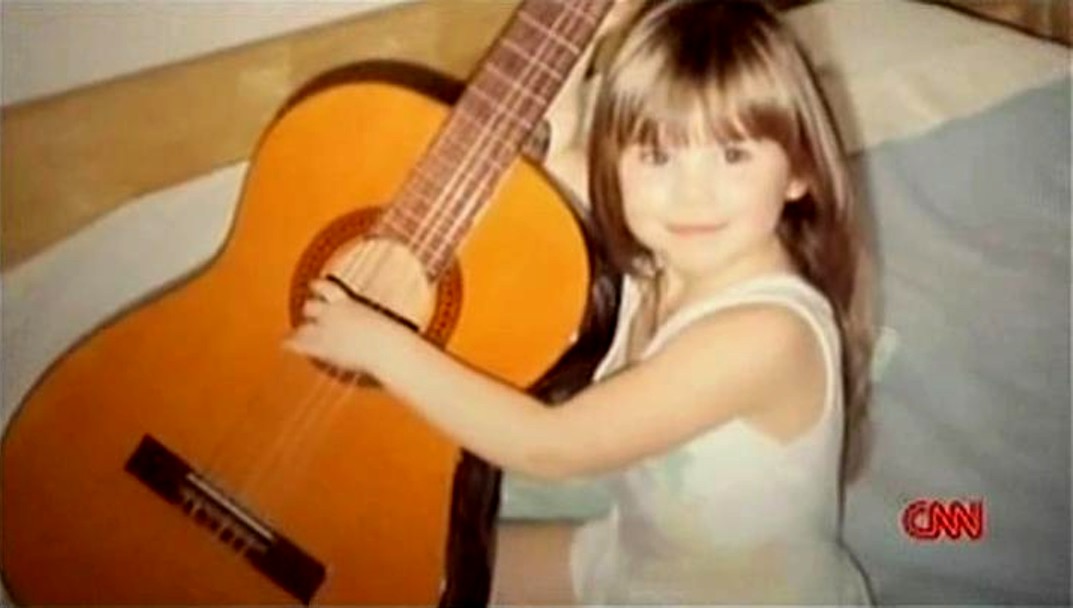
(4) It was good to hear from Dr Hampikian that the “police did a good job in processing the crime scene and collecting evidence”. Unlikely that on the basis of this observation he will be making any submissioms to the two independent DNA experts appointed by the court to review the DNA evidence concerning the knife and the bra clasp. Particularly as his other observations were quite ludicrous or fell outside his field of expertise.
Consider this: “They didn’t like the way Amanda behaved, whatever that means, and so they wanted to investigate her, and Raffaele and her boss. When the DNA is finally processed it is not any of their suspects. And so what do you do? What would you do? [laughing] You let them go.”
Really?
Can he, you, or anyone else, think of a police force anywhere in the world which would want to release a suspect in circumstances where a staged burglary, inappropriate behaviour and language pointing to an insider’s knowledge as to the circumstances and manner of the victim’s death, an alibi that no longer held up, and the framing of an innocent man for murder, clearly points to her involvement.
In addition there was early evidence of Amanda’s blood in the bathroom next to the Meredith’s bedroom, as a drop on the sink faucet and mixed with Meredith’s blood elsewhere. Contrary to Dr Hampikian’s contention (and he is not a lawyer) there was sufficient evidence to charge or at least prefer a holding charge pending further investigation. This happens frequently in the USA and UK. In addition Dr Stefanoni was aware that there was further evidence to be collected from the crime scene.
In murder cases suspects are very rarely released on bail for fear that they may abscond. Particularly a suspect who is not resident in the country.
A question for Dr Hampikian. How would you like it if a suspect in the murder of your daughter was granted police bail and skipped the country to return home and evade justice? Make no mistake about it. That is what would have happened.
(5) The DNA evidence was not finally processed, as Dr Hampikian knows, until after the final DNA evidence was collected on the 18th December, weeks after Amanda’s arrest. That was when the bra clasp was collected together with samples from traces identified by luminol. That delay was entirely attributable to the necessity of having to arrange for the defence lawyers and experts to be present to collect further samples, and not incompetence on the part of police or prosecution.
“Forensic expert Greg Hampikian says finding DNA (Amanda’s and Meredith’s) but no blood makes it highly unlikely that the knife was used in a bloody murder. He also says it is surprising that the prosecutor was even allowed to admit such a small unexplainable sample (Meredith’s on the blade) as evidence.” “Would this have made it into a US court? I don’t think it would have made it into a US lab report”.
Not make it into a lab report? Is he trying to be funny?
(6) Well there is the evidence of the police that the knife smelt heavily of bleach which, with its particular size and the fact that it looked so clean, was what made them interested in it. How many people wipe down an item of kitchen cutlery with bleach? I do not know but in my lifetime I have never known anybody do this. Washing up liquid works just fine for me.
Dr Hampikian is of course referring to the Low Copy Number (cell count) DNA reading but the fact is that the graph produced by the DNA electropherogram was a clear match for Meredith’s DNA profile.
Dr Hampikian might be interested to know that LCN DNA is admissible in evidence in at least one jurisdiction in the USA and there is growing support for it with the advances in DNA forensics. The majority of the experts who testified at the trial said that it was clearly Meredith’s DNA.
(7) Furthermore Raffaele explained the existence of the sample by saying that he had accidently pricked Meredith with the knife whilst cooking at his flat. Untrue. Amanda herself testified that Meredith had never been to Raffaele’s flat, and there was no evidence that she had. Nor was there any evidence or suggestion that, prior to the murder, the knife had been to the girl’s cottage.This evidence would in most courts make the DNA evidence admissible.
(8) Dr Hampikian again, on the bra clasp (with Raffaele’s DNA on it) ““ “If that’s all there is it’s a very weak piece of evidence”. “And it’s inconsistent with every other piece of evidence in the case”.
Well, there is the bloody footprint on the bathroom mat which the trial court accepted as being consistent with Raffaele’s footprint rather than Rudy Guede or, for that matter, Amanda. As to the DNA on the bra clasp this was, in forensic terms, an abundant amount, and no one, but no-one, has disputed that this was Raffaele’s DNA.
Perhaps Dr Hampikian can explain how Sollecito’s DNA comes to be there considering that his DNA was not found anywhere else in the flat (other than on a cigarette stub in the kitchen and on Meredith’s door handle) in a quantity even close to the amount found on the bra clasp?
He was clearly advancing the lone wolf theory espoused by Amanda knox supporters given that Guede’s DNA was found in Meredith’s room and on her person. Funny how that DNA evidence is accepted by them but the bra clasp DNA is not. As a forensic biologist perhaps he might also want to comment on the fact that ““
(9) There was not one single trace of evidence, DNA, fingerprint, footprint or otherwise, relating to Guede found on the window sill, window, glass, or any item located in, or anywhere else in, Filomena’s room. And yet a mixed sample of Amanda’s and Meredith’s DNA was found on the floor there. Explain that!
Without question Dr Hampikian’s soundbite contributions to the program were scientifically very inept for someone in his position, but I am sure that he knew what he was doing.
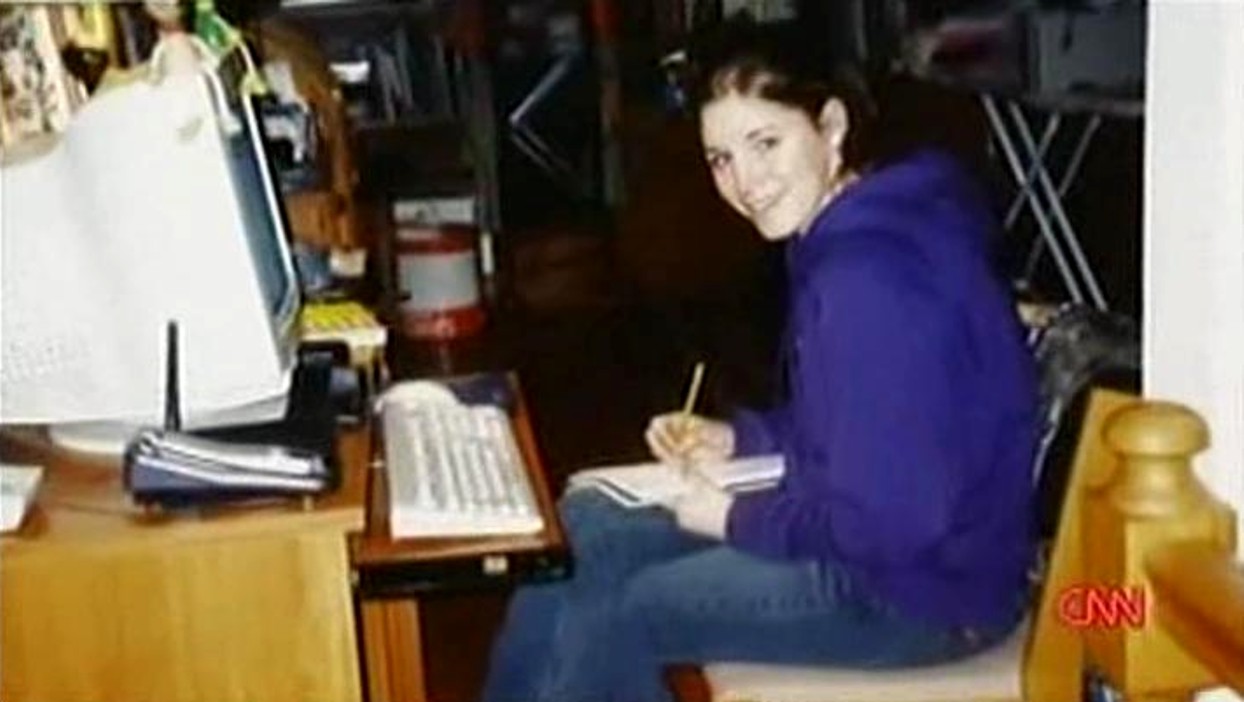
(10) Drew Griffin’s loaded, error strewn and unsubstantiated commentary continued -
- DG: Amanda was “confronted (by the police) with evidence of criminal activity which the police didn’t have.”
Amanda was questioned by the police as a witness in the immediate aftermath of the discovery of the murder along with others such as her flatmates Filomena and Laura, and Raffaele and three of Meredith’s English girlfriends. These were not interrogations. The questioning of Amanda for 52 hours (suggesting intensive interrogation) as mentioned by her father at the beginning is an exaggeration if not a fabrication.
Amanda was questioned (interrogated, if you like) at the police station on the 5th November from around 11.30pm to 1.45 am when the questioning stopped because she had become a formal suspect due to her disclosure that she had been at the cottage when Meredith was being murdered by Patrick Lumumba. She was not questioned again other than in court.
A question for Drew Griffin. “During the aforesaid period what evidence was she presented with that the police did not already have?” I, for one, do not know what he is talking about.
- DG: “The case against Amanda Knox appears to be falling apart.”
Really? News to me.
- DG: “The tabloid press is beginning to tell a different story.”
Well, they are reporting (and sensationalising in some cases) developments (such as they are) in the appeal. But a different story? Again news to me.
- DG: “The case against Amanda Knox and Raffaele Sollecito seems to be hanging on two very small pieces of DNA evidence.”
Actually Drew, that’s what you would like people to think. It would be far more accurate to say that it is the validity of any defence that is hanging on this evidence, and that what crumbs they may be thrown as a result of the review will not really damage that evidence nor alter the soundness of the convictions.
There is plenty of other evidence, all omitted in this biased documentary.
(11) Drew Griffin next remarks: “Curatolo’s evidence was laughable”.
Really? In what way? He seems to have got the date and times and identifications right. Explain that. In fact whatever the appeal court now makes of his testimony there was nothing laughable about his evidence. He was indeed confused in parts but very clear that he saw Amanda Knox and Raffaele Sollecito arguing together in Grimana Square the night before the police and forensic teams arrived in the square and at the cottage.
The confusion that arose was that he introduced elements of Halloween (the night before that) including a costume he saw in his recollection of the said night. However he was also certain that it was not raining when he saw the two together. It did not rain on the night of the 1st November whereas it did on the night of the 31st October.
- DG ““ “He revealed that he was under investigation by Mignini’s office at the exact moment he became his star witness.”
I sensed several slurs coming up and I was not wrong.
- DG ““ “Did he get any favours?
Like what? The promise of a reduction in sentence? It looks like he didn’t.
- DG ““ “So you believe the testimony of a homeless heroin dealer?”
Yes, for the reasons given. Drew, it does not matter what Mignini really believed or believes now. Testimony is heard and evaluated by the court not by prosecutors. Mignini is not heading the prosecution team on the appeal and he certainly has no influence otherwise on judges and jurors anyway.
(12) Another fatuous claim. “But almost immediately after the arrests Mignini had a problem. The third suspect, Patrick Lumumba had an airtight alibi. He was in his crowded bar that night. He could not have been involved.”
Actually the bar was not so crowded. Pretty empty really. Patrick was fortunate that of the few customers who turned up one was a Swiss professor, Roman Mero, who travelled all the way back from Zurich to give police Lumumba’s airtight alibi. But for that Lumumba might have stayed in the frame-up longer thanks to Amanda. She did not ever admit to the police that she had lied about him.
(13) Another fatuous claim. “Knox stated that she was denied a translator when referring to her interrogation/arrest.”
Knox testified on the stand in June 2009 that she DID have a translator at that time, by the name of Anna Donnino.
(14) We then had the introduction of Doug Preston, co-author of “The Monster of Florence” (another inadvertent plug ““ sorry) whose book is in the planning stage for a movie with a star role for this financial donor to The Committee to Protect Journalists. Preston is to be played by George Clooney in the movie.
I do not intend to dwell on this section. It is irrelevant to the Murder of Meredith Kercher and to do so would be to give this pompous individual more of the self publicity he craves It’s sole purpose was to portray the Perugia police and in particular Mignini as arch villains. It might occur to many that Doug Preston has a financial interest in doing this.
We were treated to the following gems ““
“Police interrogated people brutally and extracted suspect confessions from them” (in the Monster of Florence case ““ sorry, another plug)
“I was terrified. I thought these people have the power to put me in prison for the rest of my life.”
Mr Preston obviously does not like having to answer questions or to have to account for himself. Well nobody does really but we are in wimp territory with Preston.
George Clooney could not possibly play such a wimp. Instead the scene in the movie will have to be “sexed up” with Mignini being portrayed as overbearing, obsessive, corrupt and demented.
Hardly the picture he presented in his interview - that is, the two hour long interview that was not shown.
It is not accurate to say the Preston has never returned to Italy as a result of his brush with Mignini. He has been back with Dateline NBC to tape a show on the Monster of Florence (4th and last plug!).
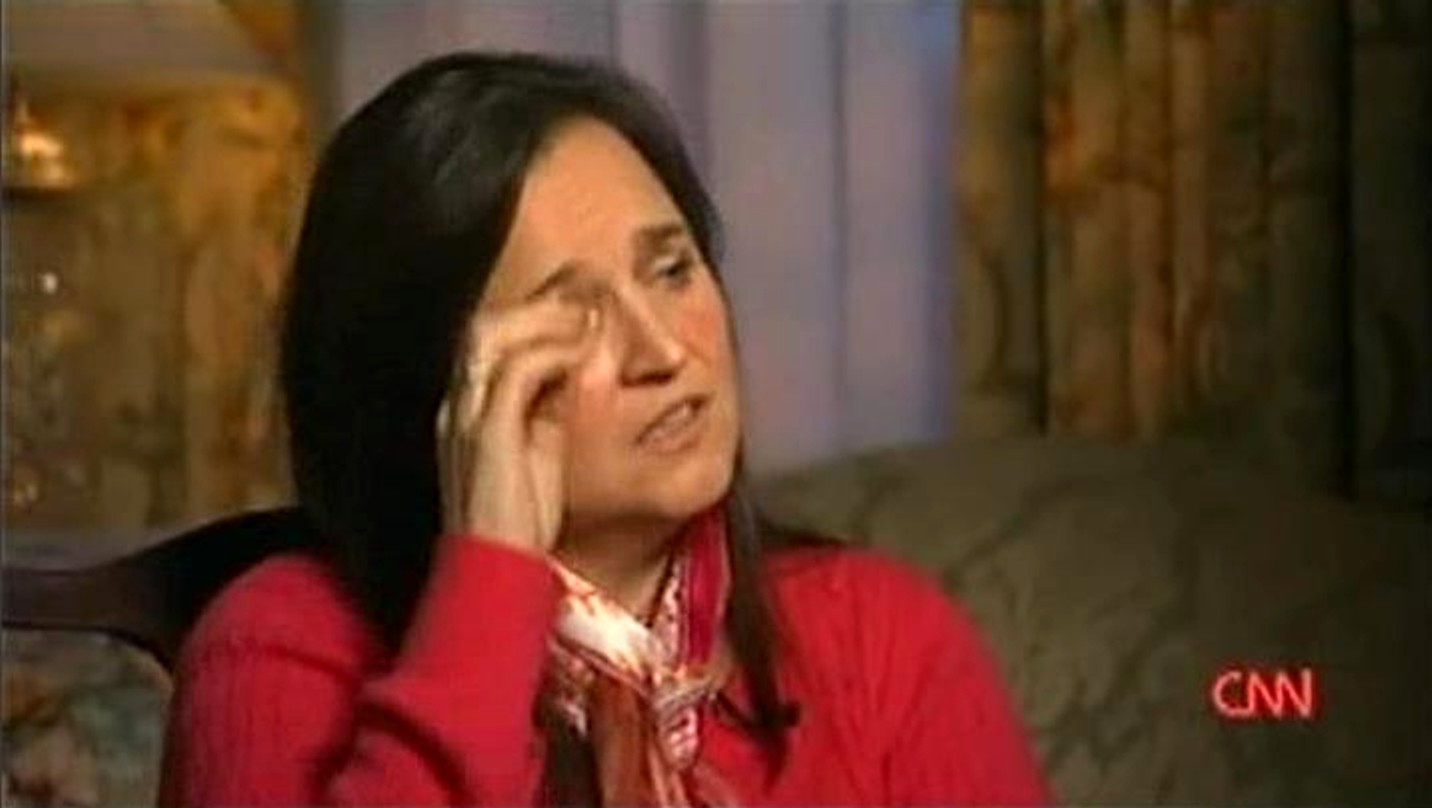
The following are some of the other facts omitted - all pursuant to testimony at the trial or verifiable from other easily obtainable sources. Take note first that there were extensive investigations by experts of cellphone and computer activity and their findings were admitted as evidence. Also it may be helpful to know that Meredith Kercher had two mobile phones, an Italian phone given to her by Filomena and her own UK phone.
These were stolen by her killers and discarded elsewhere. However they were found and handed in to the Postal Police who ascertained that the Italian phone was registered to Filomena and consequently two officers were dispatched to the cottage where they found Amanda and Raffaele.
(15) the fact that Amanda claimed that she returned to the cottage on her own at 10.30 am before the discovery of Meredith’s body to have a shower and collect a mop to clear up a spill of water at Raffaele’s flat the night before”“ which Massei found unlikely given that by her own testimony she had arranged with Raffaele to visit Gubbio that day and had testified that she had already had a shower at Raffaele’s the evening before; and furthermore that Raffaele employed a cleaner who kept a mop and cleaning equipment at his apartment block.
(16) the fact that cell phone records show that Amanda called Filomena at 12.08 pm (on the 2nd November) to report the front door being open, blood on the bathroom mat and Meredith’s door being locked. She was at Raffaele’s flat at the time. Filomena tells her to try Meredith’s phones. Records corroborate that Amanda did call each of Meredith’s phones in turn,
But these two calls lasted just 3 seconds and 4 seconds respectively. Does this sound like a genuine attempt to get hold of Meredith? One also has to wonder why she did not attempt to call Meredith’s phones again once she and Raffaele had arrived together at the cottage when she might have assumed that they would be heard ringing in Meredith’s bedroom.
(17) the fact that Amanda and Raffaele claimed that Raffaele had called the carabinieri to report a burglary before the postal police arrived. This 112 call was later discovered as timed at 12.51 pm after the arrival of the postal police.
(18) the fact that Amanda told the postal police that Meredith always locked her bedroom door even when she went to the bathroom. This was flatly contradicted by Filomena who said that the only occasion when Meredith had ever locked her door was when she returned to visit her mother in England.
(19) the fact that when the postal police looked into Filomena’s bedroom Raffaele told them that nothing had been stolen. That was true - but why had he been so certain?
(20) the fact that Amanda telephoned her mother from the cottage at 12.47 pm (around 4 am in the morning Seattle time), before the discovery of the body. Why did Amanda wake her mother up in the middle of the night? Edda was subsequently puzzled as to why Amanda was unable to remember this call when, as she put it “Nothing had really happened”.
Amanda persisted even with her parents in denying the existence of the call, but then eventually said that she could not remember it.
Edda says that Amanda mentioned in the call that there appeared to have been someone in the cottage, and that she told Amanda to call the police. Amanda did not mention, according to Edda, that the postal police were already there.
(21) the fact that in her 2,900 word e-mail home of the 4th November she professes to have been in a panic about Meredith’s locked door and her whereabouts (calling out her name, banging on her bedroom door, and running out on to the balcony and leaning over the rail and trying to look through Meredith’s bedroom window), but according to the witnesses exhibited no particular concern about Meredith when the postal police arrived, nor raised any concerns with them, rather quite the opposite, before the discovery of Meredith’s body.
(22) the fact that in the same e-mail she says that during her 10.30 am visit to the cottage she noticed the blood “smeared” on the sink faucet, drops in the sink and the bloody foot print on the bathmat. “Ew! but nothing to worry about” she says. She attributes the blood to perhaps Meredith having menstrual issues.Does that really make sense? A footprint in menstrual blood? Meredith? who was always so clean and tidy and who had admonished Amanda for her uncleanliness in the bathroom.
(23) the fact that she claims in the e-mail that Raffaelle tried to force Meredith’s door before the arrival of the postal police and failed, despite the fact that one of the other witnesses forced it quite easily.
(24) the fact that (if Amanda’s account of returning to the cottage at 10.30 am is to be believed) notwithstanding blood in the bathroom (which by Amanda’s own admission was not there when she left the cottage the day before), the front door being open, Meredith’s bedroom door being locked (when it was usual for it to be unlocked),and unflushed feces in the large bathroom toilet (which,she says, made her feel uncomfortable about the situation), Amanda did not think of attempting to contact Meredith by phone (on the assumption that she had gone out that morning) nor take a decision to notify anyone other than Raffaele for up to an hour and a half, until a 12.07 call to Meredith and the 12.08 phone call to Filomena. Does this seem credible?
(25) the fact that the 12.07 call was to Meredith’s UK phone and lasted 16 seconds but oddly she does not mention this call to Filomena seconds later. Nor, before calling Filomena, does she try Meredith’s italian phone. The italian phone was, Amanda knew, the phone Meredith used to make and receive local calls. Massei infers that there was no need to try Meredith’s italian phone because Amanda knew that both phones had been disposed of together. This explains why the first call (immediately prior to calling Filomena) was 16 seconds long (to check whether or not both phones had been found), and why the subsequent two calls (after the call to Filomena) were both very short.
(26) the fact that Filomena was worried enough to call Amanda twice at 12.12 (36 seconds) and at 12.20 (65 seconds) without Amanda picking up the calls. Amanda did pick up the final call at 12.34. Why did she not answer the first two calls?
(27) the fact that Amanda told Meredith’s English friends at the police station details of the body and wounds, although but for a foot it was covered by a quilt and despite her not being in line of sight when the body was discovered, and not having been told any of these details by anyone afterwards.
(28) the fact that when 3 days after the murder Amanda, Filomena and Laura were requested by the police to accompany them to the cottage to check out some details, Amanda, on being shown a drawer of knives in the kitchen, appeared to have had a psychotic incident, putting her hands over her ears and trembling.
(29) the fact that Raffaelle told a British Sunday newspaper in an exclusive interview that on the night of the murder he was at a party with Amanda and not at his flat. He also said that Amanda had gone back to her own flat the next day at midday, and not at 10.30am as she claimed.
(30) the fact that having told the police that she had been with Raffaele all night on the 1st November, sleeping with him until 10.00 am the next morning, Raffaele then proceeded to destroy this alibi on the evening of the 5th November by telling the police that on that night Amanda had gone out and had not returned to his flat until 1 am.
(31) the fact that Raffaele’s own alibi was not corroborated by computer evidence. He claimed to have spent the night indoors, using his computer until late and then going to sleep. In fact all human interaction with the computer ceased at around 9.15 pm and the computer was not re-activated by him until 5.32 am the next morning when it was used for half an hour for music to be played.
(32) the fact that both Amanda’s and Raffaele’s mobiles were switched off sometime shortly after 8.42 pm and were not switched back on again until after 5.32am in the case of Raffaele who activated a text message his father had sent him late the previous night.
(33) the fact that Raffaele’s father had telephoned Raffaele at 8.42 pm and had testified that during the conversation his son told him that while he was washing the dishes he had noticed a leak of water on the floor. This times the dinner Amanda and Raffaele had together as being prior to this whereas Amanda had claimed first that dinner was a liitle after 9.15 pm and then again that it was quite late, perhaps 11 pm (close to the time that Meredith died).
(34) the fact that Amanda’s claim that she slept in until 10 am does not fit easily with the fact that Raffaele was playing music on his computer from 5.32 am nor with the evidence of Mr Quintaville, the food store owner, who says he saw Amanda when he was opening up his store at 7.45 am.
(35) the fact that Amanda and Raffaele were both using drugs. There were multiple corroborating statements to that effect.
(36) the fact that Amanda and Raffaele were constantly together ““ in a symbiotic relationship as Massei put it.
(37) the fact that Raffaele was a knife aficionado in the habit of carrying a pocket penknife. Indeed he was carrying one on him when he was interviewed at the police station on the 5th November.
(38) the fact that Raffaele watched animal porn videos and this so concerned his university that his subsequent behaviour was monitored.
(39) the fact that Raffaele posted a picture of himself on Facebook dressed up as a mummy carrying a butchers’ chopper.
(40) the fact that Amanda had also written a bizarre short story about the drugging and raping of a young girl which she had posted on her web page.
(41) the fact that Amanda and Raffaele have both suggested that the other might have committed the crime.
(42) the fact that when Rudy Guede was arrested Raffaele did not celebrate his pending imminent release but wrote in his diary that he worried that this man, whom he says he had never met, “might make up strange things about me”.
(43) the fact that there are two instances of Amanda’s DNA mixed with Meredith’s identified by luminol (a powerful presumptive test for blood); in the corridor and in Filomena’s bedroom. The luminol also identified three footprints, one in Amanda’s bedroom and two in the corridor which tested positive for Meredith’s DNA, the footprints being comparable to the shape and size of Amanda’s right foot.
(44) the fact (as mentioned by me before but not in your programme) that Amanda’s blood was found in the bathroom. Amanda’s blood was on the washbasin faucet, and the mixed blood of Amanda and Meredith was in the washbasin, the bidet, and on the cottonbud box.
(45) the fact that not only was Raffaele’s DNA found on the bra clasp but that in the electropherogram chart there were ten out of sixteen loci having peaks corresponding to Amanda’s profile. Though this is not as decisive as the DNA result for Raffaele, it does give rise to the hypothesis that Amanda touched the bra clasp as well. Amanda’s defence team may consider themselves fortunate that the bra clasp can not be re-tested.
(46) the fact that a shoeprint on Meredith’s pillow was estimated in the area of size 37, or 38. Amanda’s shoe size, not the other two.
(47) the fact that (according to Massei) the nature of the wounds and injuries sustained by Meredith ( who was a fit girl and who had trained in karate) meant that more than one attacker had to be present to inflict those ( knife wounds, strangulation, bruising to her lips and inner thighs) and to subdue her and attempt sexual intercourse.
(48) the fact that Massei also concluded from the wounds that there were at least two different knives used and that exhibit 36 (the knife on which Amanda’s and Meredith’s DNA was found) was compatible with the wound that ultimately caused her death through blood loss and asphyxiation.
(49) the fact that there were blood spots (from coughing up blood as a result of the fatal knife wound to the throat) on Meredith’s chest and bra. This and other evidence shows that her body was moved, and her bra and some other clothing removed after she had died or at least as she lay dying.This suggests that the evidence of a sex attack is, in part at least, staged.
(50) the fact that there was a footprint (Raffaele’s) in Meredith’s blood on the bathmat but none leading from Meredith’s room to the bathroom. Highly suggestive, if not proof, that there had been a clean up operation.
(51) the fact that the discovery of Amanda’s arced reading lamp in an upright position on Meredith’s bedroom floor (as if for close inspection) is also highly suggestive of a staging or clean up operation.
(52) the fact that Meredith’s stolen mobile phones were found in a garden within a few hundred yards of Guede’s and Raffaele’s apartments. The apartments are within 30 seconds walking distance of each other, much closer to each other than either are to the girl’s cottage.
(53) the fact that the other two girl occupants with keys to the flat had rock solid alibis whereas Amanda had not.
(54) the fact that according to witnesses the relationship between Meredith and Amanda had started out well enough but had started to deteriorate, be it over petty things.
(55) the fact that the placing of a duvet over Meredith’s corpse is indicative of some relationship between Meredith and her killer.
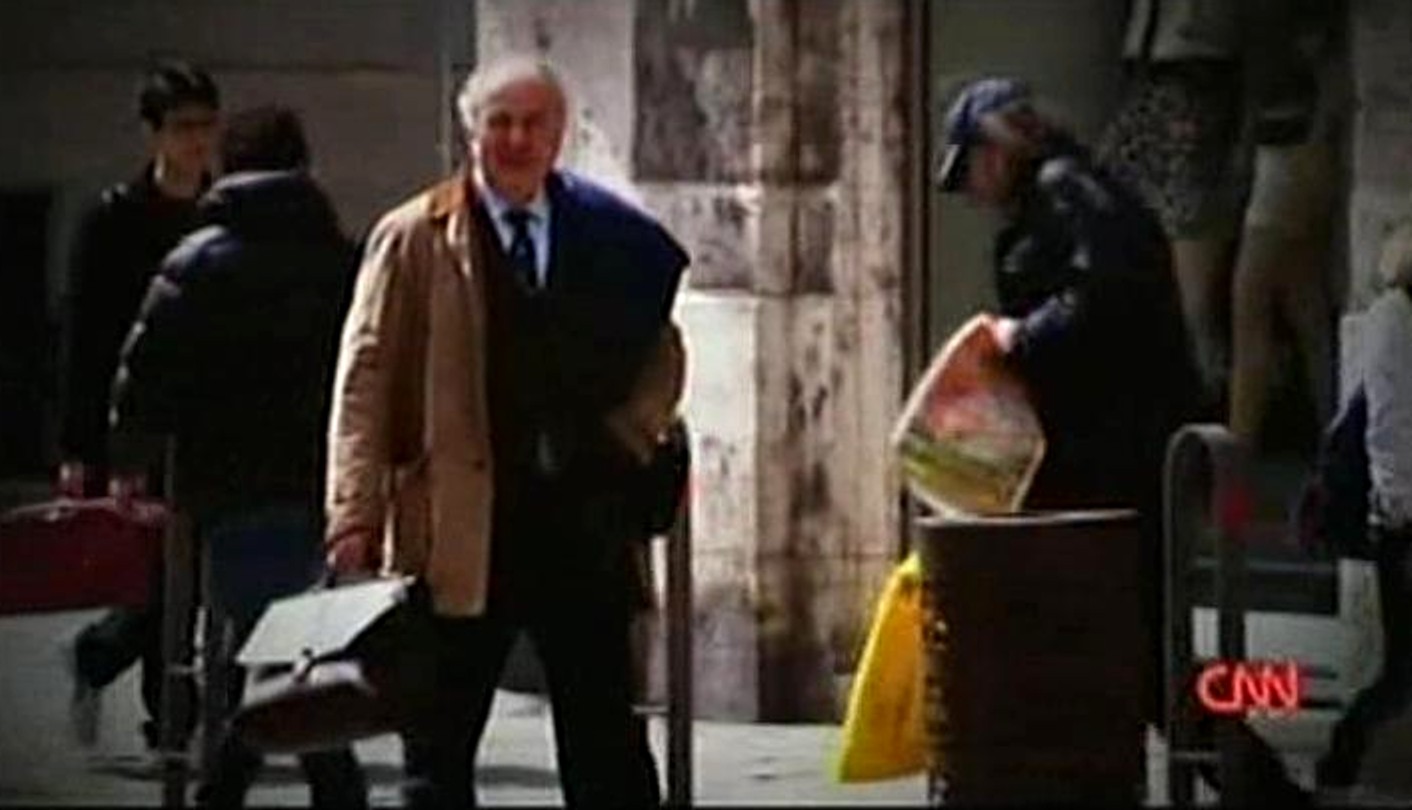
Some conclusions on the case and Griffin report
Most of the foregoing may be circumstantial evidence, but taken together it is powerful circumstantial evidence, more than enough to secure a conviction in any court in the USA.
Who would have the motive to stage a break in, stage further evidence of sexual assault for an invesigator’s benefit, carry out a partial clean up, and lock the victim’s bedroom door?
Curatolo’s evidence that he saw Amanda and Raffaele in Grimana Square, a few metres away from the cottage, having what appeared to be a heated argument, at various times between 9.30pm and 11.pm, is helpful to the prosecution case but by no means essential.
All the emphasis on the admittedly unhelpful and salacious tabloid newspaper reporting is irrelevant. It is a distraction.
In addition Rudy Guede, in his evidence, did indeed implicate Amanda Knox (starting well before the Italian police got their hands on him), and all the evidence from his fast track trial and appeals is now part of the evidence to be considered in the current appeal.
I think that the Italian Justice system would resent the insinuation in the programme that Guede received a reduced sentence because he was co-operative with the police and prosecution in implicating Amanda.
It should be noted that if Mignini, in his alleged rush to judgement, got things seriously wrong, then he would have had to manipulate the evidence of the prosecution witnesses to fit his erroneous hypothesis. A grand conspiracy! - a laughable hypothesis. The following is a list of such witnesses. It is indicative, not exhaustive.
Filomena Romanelli, Marco Zarelli, Paola Grande, Laura Mezetti, Luca Altieri, Inspector Battistelli (Postal Police), Monica Napoleoni (Head of Perugia Murder Squad), Sophie Purton, Robyn Butterworth, Amy Frost, Jovana Popovic, Antonio Curatolo, Marco Quintavalle, Nara Capezzali, Antonella Monacchia, Inspector Finzi, Superintendent Gubbiotti, Commissioner Bartolozzi, Marco Trotta, Claudio Trifici, Gregory Mirco, Dr Luca Lalli, Chief Inspector Latella, Dr Profazio, Dr Patrizia Stefanoni (Police Forensic Service in Rome and prosecution DNA expert), and Dr Torricelli (DNA expert for the Kercher family).
This particular murder case is unusual not just in the interest it has generated worldwide but also to the extent to which it has been discussed and argued over on the internet and in the manner in which on occasions it has been presented (rather than reported on) in the media. It is also unusual that the family of one of the accused has not only taken part in such activity but has hired a public relations firm to help bring this about.
There have been a number of books already but I predict that in future a number of these, and the media generally, will also deal with these additional features of the case in some detail.
Sadly for CNN I expect that “Murder Abroad ““ The Amanda Knox Story” will often be quoted and held up as an example of how bad things got.
I dare say you are free to broadcast what you like and perhaps Drew Griffin’s presentation wrought an overpowering sense of injustice in viewers and improved ratings.
With hindsight, however, I am sure that CNN will regret this shoddy little “documentary”.
It would be nice to think, when Amanda’s conviction is upheld, that CNN will broadcast a detailed corrective documentary. I look forward to hearing from you.
Yours etc
James Raper
c/o True Justice for Meredith Kercher


